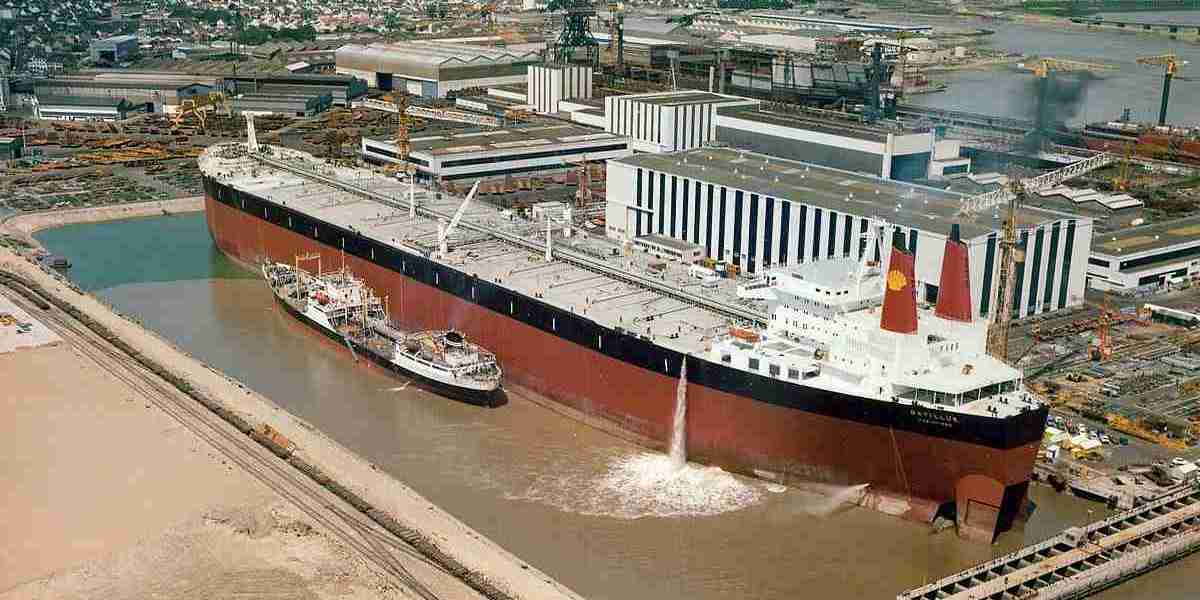The Bunker Fuel Market is currently experiencing dynamic growth, driven by evolving global shipping demands, regulatory changes, and advancements in marine technology. Bunker fuel, the essential fuel used in ships and vessels, plays a crucial role in the global supply chain and maritime industry. With the increasing demand for international trade, maritime transportation, and the transition to cleaner energy solutions, the bunker fuel sector has become a focal point of growth and innovation.
Factors Driving Demand for Bunker Fuel
The global shipping industry is the backbone of international trade, responsible for transporting a significant portion of goods worldwide. As trade volume continues to rise, there is an inherent increase in the demand for bunker fuel, which is used to power everything from cargo ships and tankers to cruise liners and fishing vessels. This surge in demand for bunker fuel is driven by several factors.
Growth in Global Trade: International trade volumes have been expanding steadily due to globalization, population growth, and increasing demand for goods across regions. As a result, more vessels are required to meet the transportation needs of goods between countries, thereby driving the demand for bunker fuel. The shift toward more diversified markets and emerging economies also places pressure on shipping companies to ensure a steady supply of fuel for their operations.
Increasing Vessel Fleet: The global fleet of ships continues to expand, with newer and larger vessels being built to handle larger loads and improve operational efficiency. These larger ships require higher quantities of fuel to operate, contributing to the increased demand for bunker fuel. Moreover, the rising adoption of more specialized vessels, such as LNG-powered ships and those using alternative fuels, is creating demand for innovative fuel solutions.
Regulatory Pressures and Environmental Concerns: The International Maritime Organization (IMO) and other regulatory bodies have introduced stricter environmental regulations to reduce emissions from shipping. The IMO 2020 regulation, which limits sulfur content in bunker fuel, has led to increased demand for low-sulfur fuels, such as very low sulfur fuel oil (VLSFO) and marine gas oil (MGO). While these changes have forced shipping companies to adjust their operations and fuel consumption, they have also accelerated the adoption of more sustainable and cleaner fuel options, driving innovation in the bunker fuel market.
Technological Advancements and Fuel Efficiency: Modern ships are being designed with greater fuel efficiency in mind, utilizing advanced technologies like energy-saving devices, hull designs, and digital tracking systems. This has led to a more targeted approach in bunker fuel consumption, where the focus is on maximizing energy efficiency and reducing overall fuel usage. As technological innovations continue to enhance fuel efficiency, they contribute to the overall growth of the bunker fuel market, although it also pushes for cleaner, more environmentally friendly alternatives.
Supply Chain Resilience: The COVID-19 pandemic revealed vulnerabilities in global supply chains, highlighting the importance of ensuring resilient maritime transportation systems. In response, many companies in the shipping and energy sectors are focusing on securing stable fuel supply lines and bolstering their bunker fuel procurement strategies. The continued importance of shipping for both emergency and regular transport of goods reinforces the ongoing demand for bunker fuel in the coming years.
Emerging Trends in the Bunker Fuel Market
As the bunker fuel market expands, several key trends are shaping its future. These trends reflect both the challenges and opportunities within the industry.
Shift Toward Cleaner Fuels: With global environmental concerns intensifying, there is a marked shift toward cleaner marine fuels. The demand for LNG as a bunker fuel alternative has been increasing due to its lower sulfur and carbon emissions. Biofuels, hydrogen, and ammonia are also being explored as potential solutions for reducing the carbon footprint of the shipping industry. The race to develop more sustainable and eco-friendly bunker fuels will continue to play a significant role in the evolution of the market.
Digitalization and Automation: The adoption of digital technologies, such as blockchain, IoT, and data analytics, is transforming the way the bunker fuel industry operates. Digital tools help shipping companies track fuel consumption, optimize routes, and improve fuel procurement strategies. The integration of automation in the management of fuel logistics also leads to more streamlined operations and better cost efficiency. These technologies are expected to drive the future growth of the market, making it more transparent and efficient.
Bunker Fuel Supply Chain Diversification: Traditional bunker fuel supply chains are evolving. There is a greater focus on diversification to ensure that fuel delivery can meet the growing demand from different regions. More ports are becoming equipped with state-of-the-art fuel supply infrastructure to handle increasing traffic and ensure reliable fuel availability. Additionally, companies are exploring partnerships with fuel suppliers to guarantee long-term access to quality bunker fuels.




